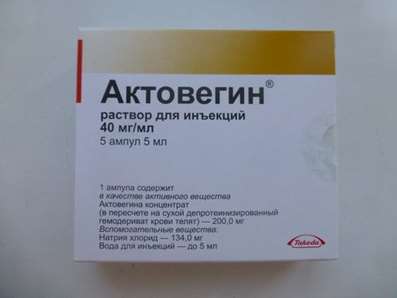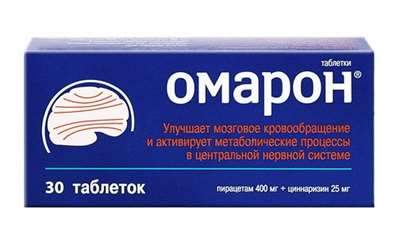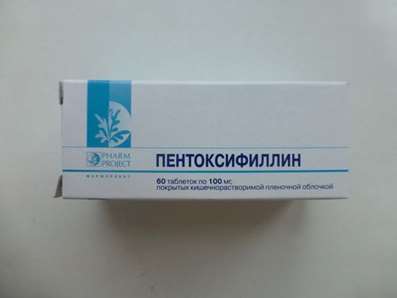Qualitative analysis when carrying out a drug test
08 Dec 2016
For the majority of the forbidden substances in professional sport for positive test result it is rather simple to receive confirmation of their presence at an urine sample. As many methods of screening and obtaining proofs are based on application of a chromatography in combination with mass spectroscopy, recommendations for identification of chemical compounds by means of systems of GH-MS and ZhH-MS have been developed (/MS). Presence of substance is considered confirmed if on relative representation of a certain quantity of characteristic ions (depending on the applied kind of mass spectrometry) the sample is comparable, taking into account tolerances, with the corresponding sample of the standard subjected to the similar analysis. Besides, time of deduction of substance shouldn't differ (within an admissible interval of a deviation) in the hromatografic analysis of a sample of urine of the athlete and a control sample of the urine containing required substance. Therefore for the characteristic and identification of substances in samples, so difficult for the analysis, as urine tests, the defining value information about the hromatografic and, especially, mass and spectrometer parameters of the studied chemical compounds has. Numerous researches of mass and spectrometer characteristics of the stimulating or masking medicines are so far conducted, and also methods of their detection for the purpose of carrying out a drug test are developed (Masse et al., 1989; de Boer et al., 1991; Donike et al., 1995; Ayotte et al., 1996; Shackleton et al., 1997; Bowers, 1998; Aguilera et al., 1999; Thevis et al., 2000, 2001, 2002, 2003a).
Further we will consider the general principles of carrying out the analysis of some of these substances.
Anabolic steroids
Considering statistical data concerning results of the carried-out doping tests and classes of the revealed forbidden substances, it is possible to notice that most often as dope in sport anabolic steroids apply. For example, more than 40% of the forbidden substances found by the laboratories accredited by the IOC in 2001 were anabolic steroids. One of representatives of this group is methyltestosterone derivative testosterone, received by replacement with metal group of a remaining balance of hydrogen at S-17. Anabolic steroids in the majority are actively involved in metabolic processes, forming as a result a series of metabolites, for example recovery of ketogroups, oxidation of hydroxyl groups, a hydroxylation, and also oxidation/recovery of communications carbon Ч carbon in a steroid molecule kernel (Schanzer, 1996). After this phase I of metabolism and before allocation as a part of urine there is a metabolism phase II, namely conjugation of products of a phase I to glyukuropida or sulfates.
The commonly accepted strategy of identification of metabolites of anabolic steroids are based on enzymatic hydrolysis of metabolites of a phase II during which phase I metabolites, their cleaning, concentration, derivatization and the subsequent analysis of GH-MS are formed. The majority of metabolites of anabolic steroids, except for nandrolon of whom it will be a question below aren't capable to be formed in a human body in the natural way therefore in case of detection of these connections in urine of the athlete subjected to a drug test the message on positive test result will be made.
Designed steroids
The problem of use of the so-called designed steroids (designer steroid) in sport and in the scientific world accrues like an avalanche after in October, 2003 (Knight, 2003) the laboratory of a drug test of University of California in Los Angeles found the substance derivative of gestrinon the medicinal preparation used for treatment of an endometriosis. Ethynesilt rest located at the 17th Carboneum of this bond leads to formation of steroid hormone of tetragidrogestrinon (THG) which can be considered as an analog of a highly effective anabolic steroid of trenbolone, however clinical trials of physiological influence and side effects of THG were never carried out. The standard strategy of a drug test in research laboratories which were still referred on detection of the pharmaceutical drugs which passed clinical tests appear to win obviously insufficiently for overcoming aspiration of some athletes a victory fell rivals fraudulently, putting at the same time at risk own health. Considering the fact that many procedures of screening are based on comparison of standard samples with assays of urine with use of such techniques of a mass spectrometry as monitoring of the set ions (selected ion monitoring, SIM) or monitoring of multiple reactions (multiple reaction monitoring, MRM), unknown derivatives or medicinal preparations, such as THG, are "invisible * for standard procedures of control. It causes need of development of more flexible techniques of control which would allow detecting both the known, and unknown substances possessing similar structure, for example the general steroid core that in principle is possible, in particular, with use of the GH-MS/MS modern systems. You can also like Testalamin.
Endogenous steroids
If in case of application of anabolic steroids in urine there are metabolites which aren't observed normal, use of testosterone as dope to find much more difficult as this hormone is produced in a human body. Various approaches, the most widespread of which are determination of a ratio the testosterone / epitestosteron (T/E) and so-called mass and spectrometer measurement of a ratio of stable isotopes of carbon (IRMS), were developed for this purpose. The profile of endogenous steroids can vary in various situations (Geyer et al., 1996), however it was shown that ratio “/Ё is a reliable indicator of use of testosterone as dope as products of an epitestosterop occur irrespective of testosterone. As threshold the value of ratio “/Ё equal 6 is accepted, however in case of excess of a threshold the positive test result is registered not directly, the athlete shall pass the further research directed to control of the natural raised testosterone level.
Increase in availability of the isotope analysis by method of mass spectrometry (IRMS) promoted carrying out a number of the researches which showed a possibility of detection of distinctions between endogenous and synthetic testosterone by means of this approach. In particular, it was established that natural testosterone differs from the analogs synthesized in the chemical way which are used as medical supplies based on the ratio of carbon isotopes, 3C/,2C. Application of GH with the subsequent combustion of the analyzed substance and the analysis of the carbon dioxide formed at the same time allows to obtain information on testosterone origin based on the isotopes this about a ratio |3C and, JC (Homing et al., 1998; Aguilera et al., 1999).
Diuretics and beta2-agonists
Also diuretics and β2-агонисты belong to substances which analysis is usually made by means of GH-MS (/MS). In particular, the group of diuretics is characterized by a chemical variety of the medicines appointed for the similar or identical purposes. Apply to representatives of this group of substances mainly negative ionization (Thieme et al., 2001; Thevis et al., 2002, 2003a) that is caused by their acid properties, however for some diuretics, in particular triamteren, is required positive ionization. For β2-агонистов the main approach is analyzed substance with the subsequent detection of positively loaded molecule. As it is described in "Analysis methods", the sources of ions integrating GH to MS usually allow generating the protonated or deprotoniron molecules without their noticeable fragmentation. Thus, structural information on the analyzed substances, specificity and selectivity of mass analyzers are provided with application of the dissociation (CAD) of the ionized medicines induced by collisions and the subsequent analysis of derivative fragments. For this purpose it is necessary to have data about affinity to protons and behavior of products of dissociation after effective activation of the analyzed molecules by means of CAD which significantly differs on mechanisms of fragmentation of molecules from electronic blow (EI). For diuretics, and also for bulk β2-агонистов, except for salbutamol carrying out the high-quality analysis is enough. Usually hromatogramma of the extracted ions do possible rather sensitive detection of these substances in biological tests, and the positive conclusion about their availability is drawn by a pas the basis of essential numerical prevalence of their resultant ions. In 2001 about 17,5% of cases of positive results carried out in 25 laboratories of a drug test accredited by the IOC belonged to application β2-agonist, diuretics were found in 5% of cases.
Drug test: quantitative analysis
For some substances, including stimulators, such as ephedrine, metabolites of anabolic steroids, such, as nandrolon and β2-agonists, such as salbutamol, threshold level is established, based on comparison with which the conclusion about positive or negative test results is drawn. Various reasons became the basis for such decision. Ephedrines are a part of many anti-cold medicines therefore by anti-doping rules their application is legal if content of derivatives of norefedrin, ephedrine and pseudoephedrine in urine doesn't exceed 5, 10 or 25 mg-ml' 1 respectively. Salbutamol treats group of simpatomimetik, is one of 4 permitted for use β2-агонистов (along with salmeteroly, terbutaliny and formoteroly) on condition of their application in the form of inhalation. As to determine how medicine was applied (oralno in the form of tablets or in the form of an aerosol) and in what dosage, rather difficult, during the competitions report about presence of salbutamol at tests in the relevant federation; if content of substance exceeds 100 ng-ml '1. During the period between competitions the threshold level of 1 mg-ml "1 as when using some simpatomimetik in the doses significantly exceeding therapeutic anabolic effects are observed is established. Presence of a metabolite of nandrolon 5a-estrai-Za-ol-17-odin (norandrosterona) in urine of professional athletes can be to some extent caused by endogenous products therefore for this substance threshold content 2 ig-ml*1 for men and 5 ng-ml' 1 for women is established. For reasons for the received values numerous researches were conducted, various factors which can influence the level of endogenous formation of this metabolite, for example a considerable physiological stress or pregnancy which lead to essential increase in content of this substance in urine were also considered. Quantitative determination of these connections is performed with use of calibrating curves which build based on results of determination by standard methods of the corresponding internal standards having similar or identical physical and chemical properties (Schanzer, Donike, 1995).
Conclusion
When carrying out a drug test the analysis of low-molecular connections is based mainly on application of hromatografic and mass and spectrometer methods which do possible detection and identification of banned drugs and their metabolites in tests of biological liquids, such as blood and urine. While in former years the analysis was carried out mainly by a gas chromatography with detection of the divided products various analyzers, for example ardent and ionization and nitrogen-phosphorus detectors, and also mass and spectrometer analyzers. In the latest works generally liquid chromatography which separation products after ionization with an atmospheric pressure are exposed mass spectrometer to the analysis as this approach allows to reduce significantly time of preparation of samples is applied and doesn't require a derivatization of the analyzed substances. Besides, thanks to application threefold of analyzers and ionic traps implementation of more flexible mass and spectrometer experiments directed to determination and the characteristic of the known medicines, and also the unknown designed substances became possible that also promotes strengthening of fight against dope and illegal use of banned drugs. From the moment of creation of the list of the forbidden substances and methods of stimulation the range of substances to which the attention when carrying out a drug test is paid ceases to change and laboratories within this dynamic process should expand and modify constantly analysis methods, increasing their sensitivity, specificity and adaptability to the solution of new tasks to limit abuses of medicines in sport, and also to save athletes from false suspicions. And here new developments in the field of a high-speed and highly effective chromatography, mass and spectrometer, having high resolution and sensitivity, and also modern acceptances of ionization provide to analytical laboratories valuable tools which allow to obtain even more detailed information about the applied substances, for example about their structure and metabolism and to expand time frames of identification of abuses of the stimulating medicines. As many medicines, such as anabolic steroids, are applied during the period between competitions, but at the same time keep the stimulating effect for several weeks, the full-fledged drug test requires carrying out analyses both during the competitions, and in the out of competition period. Besides, the maximum specificity and sensitivity of analytical procedures is required.

 Cart
Cart





